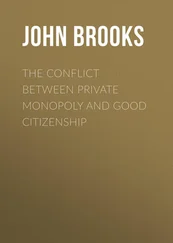Some of the most important research showing that connections between brain and body became more elaborate in humans is that conducted by Bud Craig, a physiologist at the University of Arizona. He has mapped out the nervous circuitry responsible for a remarkable phenomenon known as interoception, the perception of our inner world. We have senses like vision, hearing and smell that point outwards, to the external world; but it turns out we also have something very like sense organs that point inwards, perceiving internal organs such as the heart, lungs, liver, etc. The brain, being incurably nosey, has these listening devices – receptors that sense pain, temperature, chemical gradients, stretching tissue, immune-system activation – throughout the body, and like agents in the field they report back every detail of our viscera. This internal sensation can be brought to consciousness, as it is with hunger, pain, stomach and bowel distension, but most of it, like sodium levels or immune-system activation, remains largely unconscious, or inhabits the fringes of our awareness. But it is this diffuse information, flowing in from all regions of the body, that gives us the sense of how we feel.
Interoceptive information is collected by a forest of nerves that flow back from every tissue in the body to the brain, travelling along nerves that feed into the spinal cord or along a superhighway of a nerve, called the vagus nerve, that travels up from the abdomen to the brain, collecting information from the gut, pancreas, heart and lungs. All this information is then channelled through various integration sites – regions of the brain that collect disparate individual sensations and assemble them into a unified experience – ending up in a region of the cortex called the insula, where something like an image of the overall state of the body is formed. Craig has looked at the nerves connecting body and brain in various animals, and has concluded that the pathways leading to the insula are present only in primates, and further that an awareness of the overall state of our body may be found uniquely in humans.
Lastly and most controversially, Craig, along with other scientists such as Antonio Damasio and Antoine Bechara, has suggested that gut feelings and emotions, rationality and even self-consciousness itself, should be seen as more advanced tools that emerged over the course of evolution to help us regulate our body.
As evolution progressed, body and brain entwined in an ever more intimate embrace. The brain sent out fibres to touch every tissue in the body, asserting control over heart, lungs, gut, arteries and glands, cooling us when hot, warming us when cold; and the body in turn pumped message after message back into the brain, telling of its wants and needs, and making suggestions as to how the brain should behave. In this manner, feedback between body and brain became more complex and extensive, not less so. We did not grow a larger brain just to fit it inside a withering body of the kind seen in sci-fi movies. The brain grew in order to control a more sophisticated body – a body that can handle a sword like Alexander, play the piano like Glenn Gould, control a tennis racket like John McEnroe, or perform open-brain surgery like Wilder Penfield.
Through the research surveyed here, from anatomy, physiology and neuroscience, we have today come to see the body as an éminence grise, standing behind the brain, effectively applying pressure at just the right point, at just the right time, to help us prepare for movement. Scientists, by small steps, are thus patiently stitching closed an ancient wound opened up between mind and body. By doing so they have helped us understand how body and brain cooperate at crucial moments in our lives, like the taking of risks, including, most certainly, financial risks.
PART II : GUT THINKING 3 : The Speed of Thought 4 : Gut Feelings PART III : SEASONS OF THE MARKET 5 : The Thrill of the Search 6 : The Fuel of Exuberance 7 : Stress Response on Wall Street PART IV : RESILIENCE 8 : Toughness 9 : From Molecule to Market Acknowledgements Notes Further Reading Index Copyright About the Publisher Конец ознакомительного фрагмента. Текст предоставлен ООО «ЛитРес». Прочитайте эту книгу целиком, купив полную легальную версию на ЛитРес. Безопасно оплатить книгу можно банковской картой Visa, MasterCard, Maestro, со счета мобильного телефона, с платежного терминала, в салоне МТС или Связной, через PayPal, WebMoney, Яндекс.Деньги, QIWI Кошелек, бонусными картами или другим удобным Вам способом.
3 : The Speed of Thought 4 : Gut Feelings PART III : SEASONS OF THE MARKET 5 : The Thrill of the Search 6 : The Fuel of Exuberance 7 : Stress Response on Wall Street PART IV : RESILIENCE 8 : Toughness 9 : From Molecule to Market Acknowledgements Notes Further Reading Index Copyright About the Publisher Конец ознакомительного фрагмента. Текст предоставлен ООО «ЛитРес». Прочитайте эту книгу целиком, купив полную легальную версию на ЛитРес. Безопасно оплатить книгу можно банковской картой Visa, MasterCard, Maestro, со счета мобильного телефона, с платежного терминала, в салоне МТС или Связной, через PayPal, WebMoney, Яндекс.Деньги, QIWI Кошелек, бонусными картами или другим удобным Вам способом.
A WAKE-UP CALL ON THE TREASURY DESK
The trading floor we will be observing belongs to a large Wall Street investment bank, located a short walk from the Stock Exchange and the Federal Reserve. We begin our visit early on a crisp morning in March. It is just past 7 a.m., darkness still shrouds the city, street lamps burn, but already bankers trickle from subway stations at Broadway, Broad Street and Bowling Green, or step from taxis and limos in front of our bank. Women in Anne Taylor and trainers grip coffees; men in Brooks Brothers look freshly scrubbed and combed, their eyes fixed, like an athlete’s, on the day ahead.
Up on the 31st floor the elevator doors open and bankers are drawn into a yawning trading room. Almost a thousand desks line its gridwork of aisles, each one cluttered with half a dozen computer screens that will soon monitor market prices, live news feeds and risk positions. Most screens are black now, but one by one they are switched on, and the floor begins to blink with neon green, orange and red. A rising hubbub absorbs individual voices. Out the front window, across the narrow street, looms another glass office tower, so close you can almost read the newspaper lying on a desk. Out the side window, lower down, climbs a listed 1920s building, its stepped-back rooftop an Art Deco masterpiece: pillars topped with hooded figures; friezes depicting sunbursts, winged creatures and mysterious symbols the meaning of which have long since been forgotten. During idle moments bankers gaze down on this lost civilisation and feel a momentary nostalgia for that more glamorous time, memories of the Jazz Age being just some of the ghosts haunting this storied street.
Settling in for the day, traders begin to call London and ask what has happened overnight. Once they have picked up the thread of the market they one by one take control of the trading books, transferring the risk to New York, where it will be monitored and traded until Tokyo comes in that evening. These traders work in three separate departments – bonds (the department is often called fixed income), currencies, and commodities, while downstairs a similar-sized trading floor houses the equity department. Each department in turn is split between traders and salespeople, the salespeople of a bank being responsible for convincing their clients – pension funds, insurance companies, mutual funds, in short, the institutions managing the savings of the world – to invest their money or execute their trades with the bank’s traders. Should one of these clients decide to do so, the salesperson takes an order from them to buy or sell a security, say a Treasury bond or a block of currencies, say dollar–yen, and the order is executed by the trader in charge of making markets in this instrument.
Читать дальше
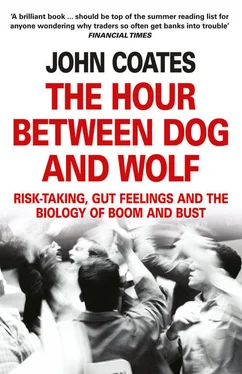
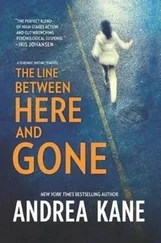
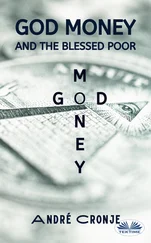
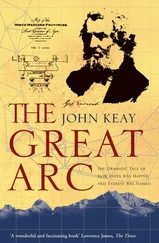
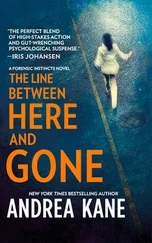
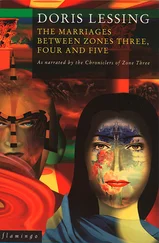

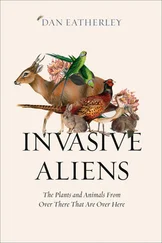


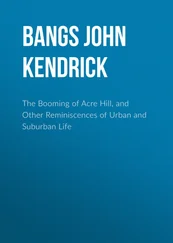
![John Bruce - The Lettsomian Lectures on Diseases and Disorders of the Heart and Arteries in Middle and Advanced Life [1900-1901]](/books/749387/john-bruce-the-lettsomian-lectures-on-diseases-and-disorders-of-the-heart-and-arteries-in-middle-and-advanced-life-1900-1901-thumb.webp)
